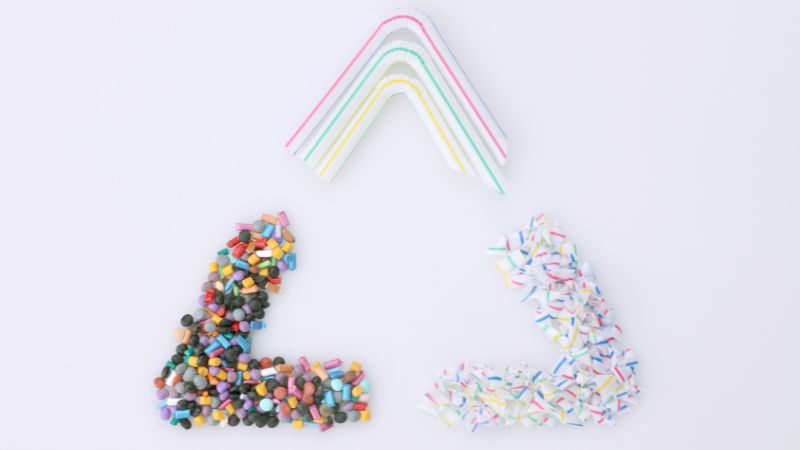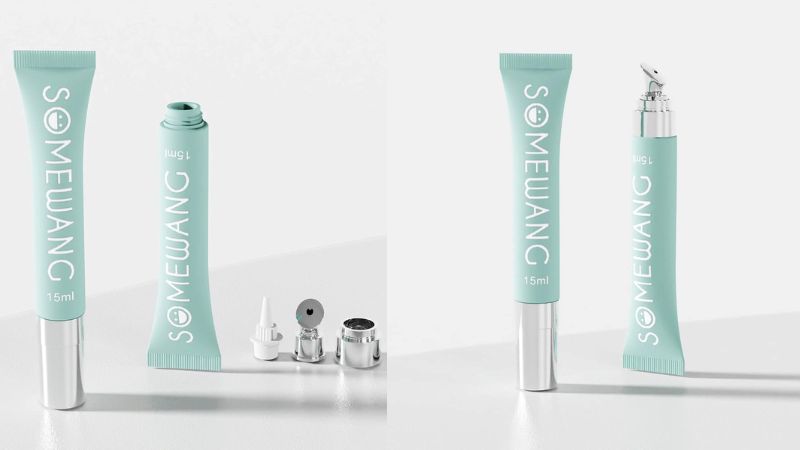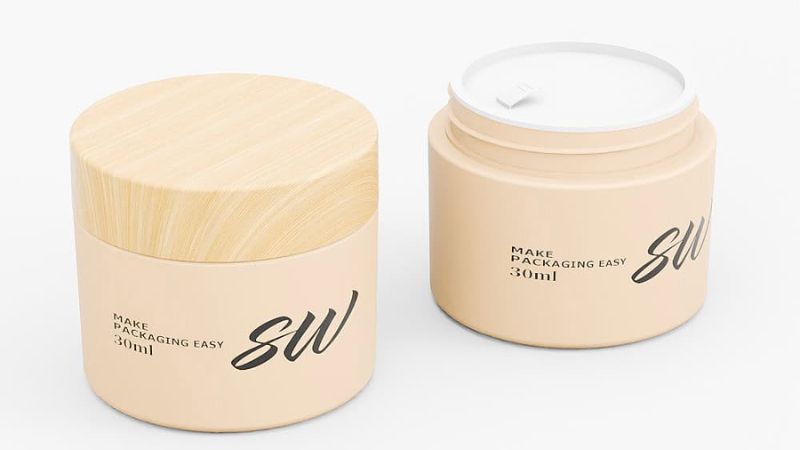
Key Takeaways
- PCR plastic is recycled from consumer waste, reducing landfill use and conserving natural resources compared to virgin plastic production.
- It lowers carbon emissions by up to 70% and supports circular economy initiatives by reusing existing materials.
- Quality and color can vary due to contamination and mixed sources, sometimes requiring blending with virgin plastic for consistency.
- PCR differs from PIR plastic, which comes from industrial waste, offers higher uniformity, and is often used in technical applications.
- Common applications include sustainable packaging, containers, and consumer goods, with materials like rPET and rHDPE being widely used.
What is PCR plastic?
Post-Consumer Recycled (PCR) material is a key sustainable solution in the packaging industry, shifting how we produce plastic packaging.
Unlike virgin plastic made from new raw material, PCR plastic is recycled material derived from the post-consumer waste stream, such as used plastic bottles and other plastic products that have been collected after use.
This recycling process transforms discarded items into post-consumer resin pellets, which can then be used in the manufacturing process to create new packaging materials.
The use of PCR significantly reduces the environmental impact of packaging by lowering the carbon footprint, diverting waste from landfill, and decreasing the reliance on new plastic.
By incorporating recycled content into eco-friendly packaging, brands can offer recyclable and environmentally friendly options, making PCR packaging a cornerstone of true sustainability and a practical choice for eco-friendly HDPE and other packaging applications.
Pros of PCR Packaging
PCR packaging offers several environmental and economic advantages:
- Reduces landfill waste by reusing existing plastic materials
- Lowers carbon footprint compared to virgin plastic production
- Conserves natural resources like petroleum and natural gas
- Meets consumer demand for sustainable product options
Cons of PCR Packaging
- Varies in quality and consistency due to source material differences
- Faces higher production costs than virgin plastic in some regions
- Contains potential contaminants from previous use cycles
- Lacks uniform color options, often resulting in gray or mixed hues
- Requires extensive sorting and cleaning processes before reuse
How is PCR plastic made?
Collection and sorting
Recycling programs gather used plastic items like bottles and containers.
Workers sort these items by plastic type, typically PET or HDPE.
Cleaning and shredding
Facilities thoroughly wash sorted plastics to remove contaminants.
Machines shred clean plastics into small flakes or granules.
Melting and pelletizing
Factories melt shredded plastic at high temperatures.
They form the molten plastic into uniform pellets or resin flakes.
Manufacturing new products
Producers use these pellets as raw material for manufacturing.
They sometimes blend PCR resin with virgin plastic to meet specific quality standards.
Quality and composition
PCR plastic contains between 10% and 100% recycled content.
Common resin types include rPET, rPP, and rHDPE for sustainable packaging applications.
What’s the Difference Between PCR and PIR
The core difference between PCR and PIR lies in their source of material and the implications this has on their entire lifecycle.
PCR is collected from post-consumer waste streams, such as used packaging and containers, leading to varied quality and consistency due to potential contamination and mixed polymer sources.
Consequently, it requires complex cleaning and sorting during recycling. In contrast, PIR is obtained from pre-consumer industrial byproducts, which maintains a high degree of uniformity as it comes from controlled industrial waste, thereby simplifying its processing with minimal contamination.
While the environmental benefits of PCR are highlighted by its direct reduction of landfill waste and fossil fuel use, PIR excels at diverting industrial scraps from waste streams.
These differences dictate their common applications: PCR is often used for new packaging, containers, and consumer products, where its potential for color variations and lower mechanical strength can be accepted. PIR, with its better mechanical properties and consistency, is typically applied in more demanding sectors like automotive parts, electronics, and other high-quality goods.
| Aspect | PCR Plastic | PIR Plastic |
|---|---|---|
| Source | Consumer-used items | Manufacturing waste |
| Recycling Complexity | High | Low |
| Contamination Risk | Significant | Minimal |
| Color Consistency | Variable | Uniform |
| Typical Uses | Food packaging, bottles | Technical components, housings |
Is PCR Packaging Biodegradable?
Unfortunatelty, PCR plastic isn’t biodegradable.
PCR packaging is made from recycled plastics like rPET, rPP, and rHDPE.
These plastics belong to the category of traditional petroleum – based plastics, and their molecular structures are relatively stable.
Biodegradable plastics need to be able to be decomposed into non – toxic substances such as carbon dioxide and water by microorganisms under certain environmental conditions.
However, the molecular chains of PCR plastics will not be easily broken down by microorganisms, so they cannot be biodegraded.
PCR Products From Somewang
PCR Plastic Lipstick Tubes

Discover our high-quality D19mm plastic lipstick tubes, designed for lipsticks, glosses, and cosmetic products. With a 15ml capacity, these tubes offer durability and elegance.
This eco-friendly lipstick tubes are available in PE PCR (post-consumer recycled) material, aligning with sustainable packaging goals.
Key Features:
- Size: D19mm
- Capacity: 15ml
- Custom Colors & Printing Options
- Silk Screen, Hot Stamping Branding
- Sustainable PE PCR Material Available
PCR Double Wall Cream Jar

Somewang versatile PP plastic double wall cream jars, designed for cosmetics, skincare, and cream-based products. Available in sizes from 10ml to 380ml, these jars feature an innovative double wall structure and a sleek aluminum lid, offering enhanced product protection and a premium unboxing experience.
The PP material ensures durability, and the PCR option supports eco-friendly initiatives.
Key Features:
- Material: PP with Aluminum Lid
- Double Wall Design for Premium Look & Feel
- PCR Sustainable Material Option
- Export-Standard Packaging
Frequently Asked Questions
Can PCR plastic be recycled again?
Generally, PCR plastic cannot be easily recycled again. Its reuse is typically limited to one additional lifecycle, which reduces the need for consumers to recycle the packaging after use but still contributes to waste reduction overall.
Is PCR plastic safe for food packaging?
Yes, certain types of PCR plastic, like rPET and rHDPE, can be certified as food-safe after proper cleaning and processing.
How much recycled content is in PCR plastic?
PCR plastic can contain anywhere from 10% to 100% recycled content, depending on the product requirements. It is often blended with virgin plastic to achieve desired quality, durability, and appearance in the final product.
Does using PCR plastic help the environment?
Yes, using PCR plastic significantly reduces greenhouse gas emissions. It also decreases reliance on fossil fuels, diverts waste from landfills, and supports a more sustainable, circular economy.
